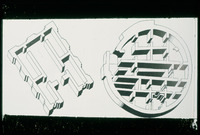Tepe Gawra
unknown (Mesopotamian)

Download110571_cp.jpg (250.3Kb)
Date
-5500--500Description
Ancient Mesopotamian mound, north-east of modern Mosul in Iraq. The site, which was excavated by E. A. Speiser (1927, 1931–2 and 1936–7) and Charles Bache (1932–6 and 1937–8), is noted for its informative remains dating to the 4th and 5th millennia bc, including rich graves of the Uruk period and the ‘acropolis’ of late Ubaid times (see fig.). The archaeological materials are in the Iraq Museum, Baghdad, and the University Museum, Philadelphia.
The upper levels of the site (numbered I–X) have been totally excavated, providing rare evidence of settlement architecture. Levels I–IV are dated to the 2nd millennium bc, with fine examples of Nuzi and Khabur ceramic types. The preceding levels make up a chronological sequence including Ur III (level V), Sargonic (VI), Early Dynastic/Ninevite 5 (VII), Uruk, including Jemdet Nasr (VIII–XII), late Ubaid (XIII–XIX) and Halaf (XX). Material of the Halaf period was also recovered from soundings at the base of the mound. The most notable objects from the site are those from the brick or stone-built Uruk tombs (4th millennium bc), including decorative objects in gold, a unique electrum wolf’s head (Baghdad, Iraq Mus.), beautifully carved stone bowls (of marble, serpentine and, unusually, obsidian), ivory combs, and plaques and beads of lapis lazuli and other exotic materials. Of especial importance, too, is the vast quantity of seal impressions on clay, which constitute a major source for the Ubaid and Uruk periods. The designs include linear and geometric patterns, drilled designs (rare), naturalistic motifs including animals, humans (sometimes in erotic pose), fishes, snakes and scorpions. Of particular significance is the large number of sealings from the ‘acropolis’ of level XIII, suggesting their possible association with some centralized economy already in Ubaid times. Jemdet Nasr animal stamp-seals were found in level VIII, and cylinder seals are first reported in level VII. plan (drawing), Level VIII C, temple, and Level XI A, row of houses
Type of Work
City, Archaeological siteSubject
Iraq --Antiquities, Mesopotamia, Temples --Iraq, Architecture, Ancient --Iraq, Archaeological sites --Iraq
Rights Statement
All rights reserved
Item is Part of
130352